5 Signs That Your Dog Is Happy and How to Recognize Them Easily
Many dog owners want to know if their pet is truly happy. Dogs cannot speak, so their emotions are shown through behavior and body language. Understanding these signals helps owners make sure their dog feels safe and cared for.
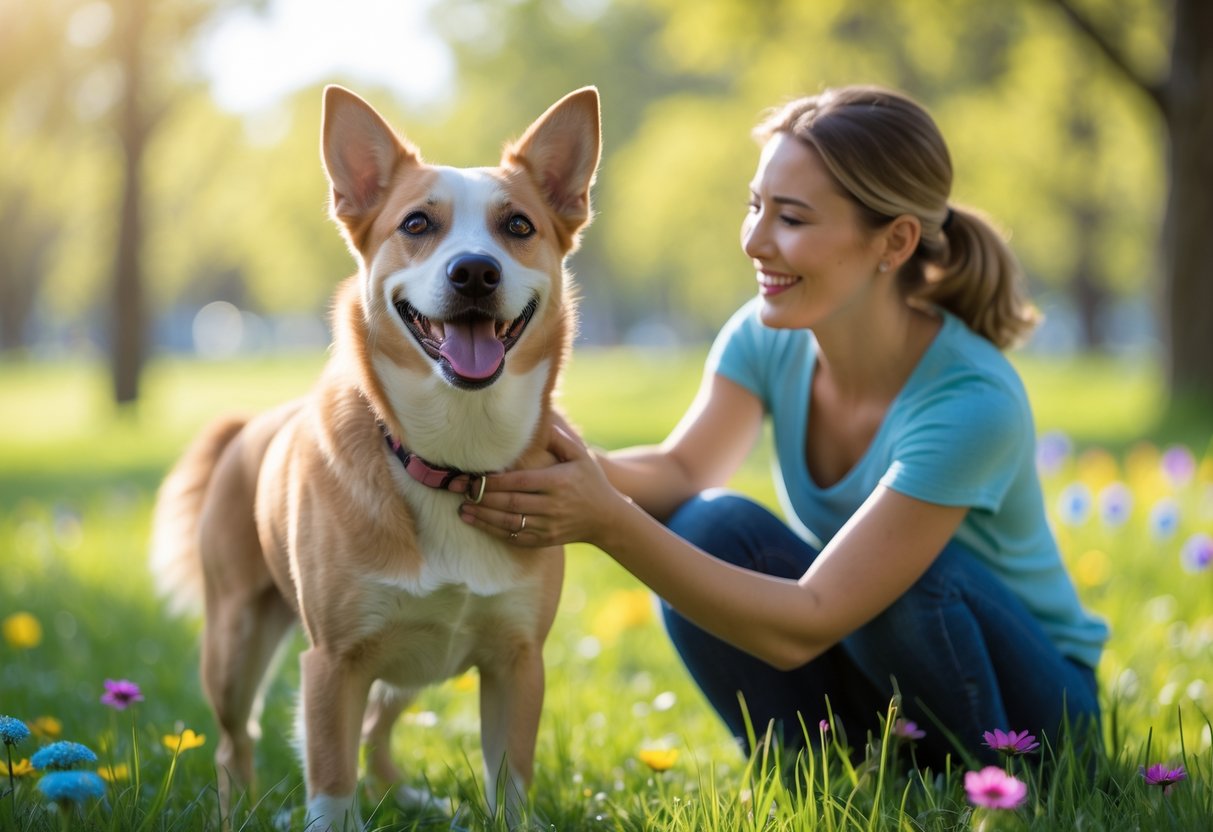
Recognizing clear signs of happiness in a dog can improve the relationship between pet and owner. By paying attention to these clues, owners can better meet their dog’s needs and support their well-being.
1) Wagging tail with a loose, relaxed movement
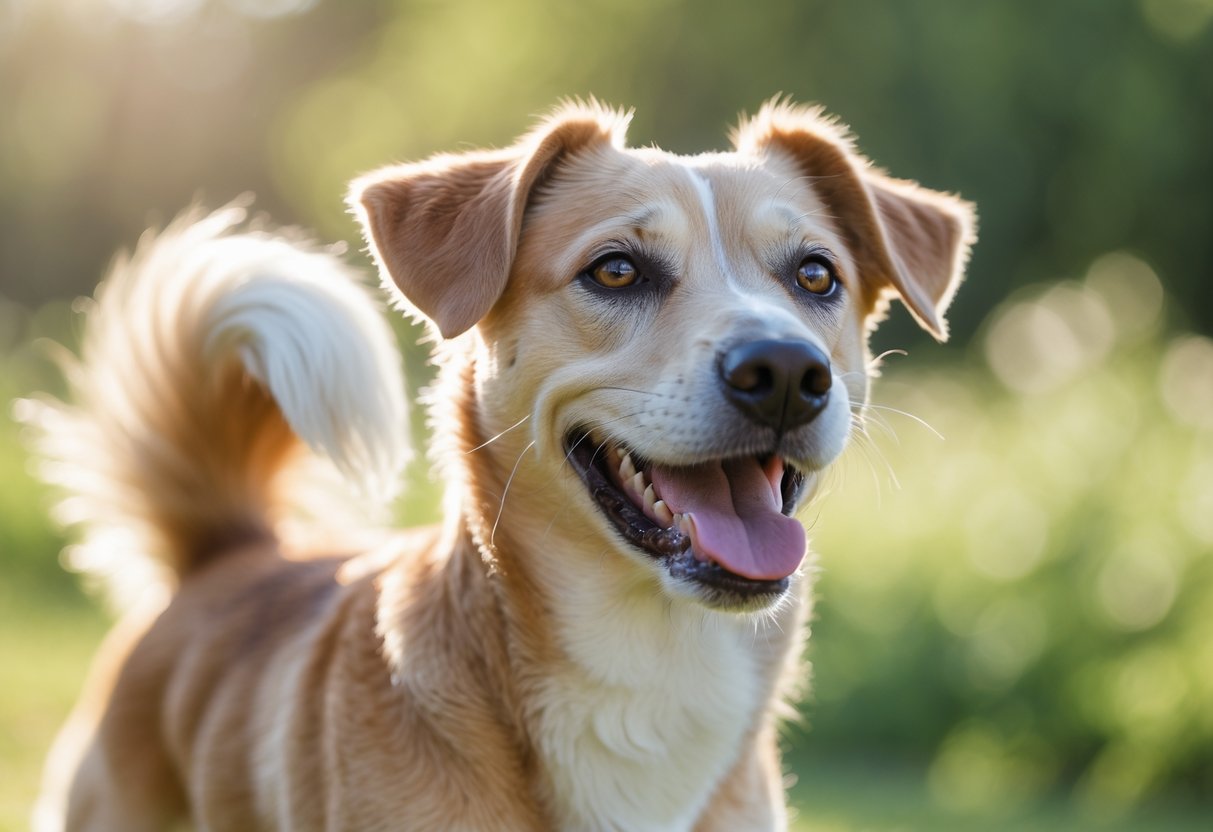
A wagging tail is often a sign of a happy dog, but the way the tail moves matters. When the tail wags in a loose, relaxed way, it usually shows the dog feels calm and content. The movement is smooth, not stiff or fast.
The position of the tail also helps tell the story. A tail held at a neutral height, not tucked low or held very high, with gentle wagging, indicates friendliness and comfort.
If the dog’s body is relaxed and the tail wag matches that, it confirms the dog is happy. Watch for other signs like a soft gaze and relaxed muscles to support this.
2) Bright, alert eyes and relaxed facial expression

A happy dog often has bright and alert eyes. This look shows that the dog feels interested and engaged with its surroundings. The eyes are soft, not wide or tense.
The facial muscles are relaxed, making the dog’s face look calm and gentle. A slightly open mouth with a relaxed jaw is a common sign of contentment.
In contrast, a dog with wide eyes showing lots of white may feel stressed or scared. Relaxed eyes and face help show that the dog is safe and comfortable in its environment.
3) Playful behavior and willingness to engage
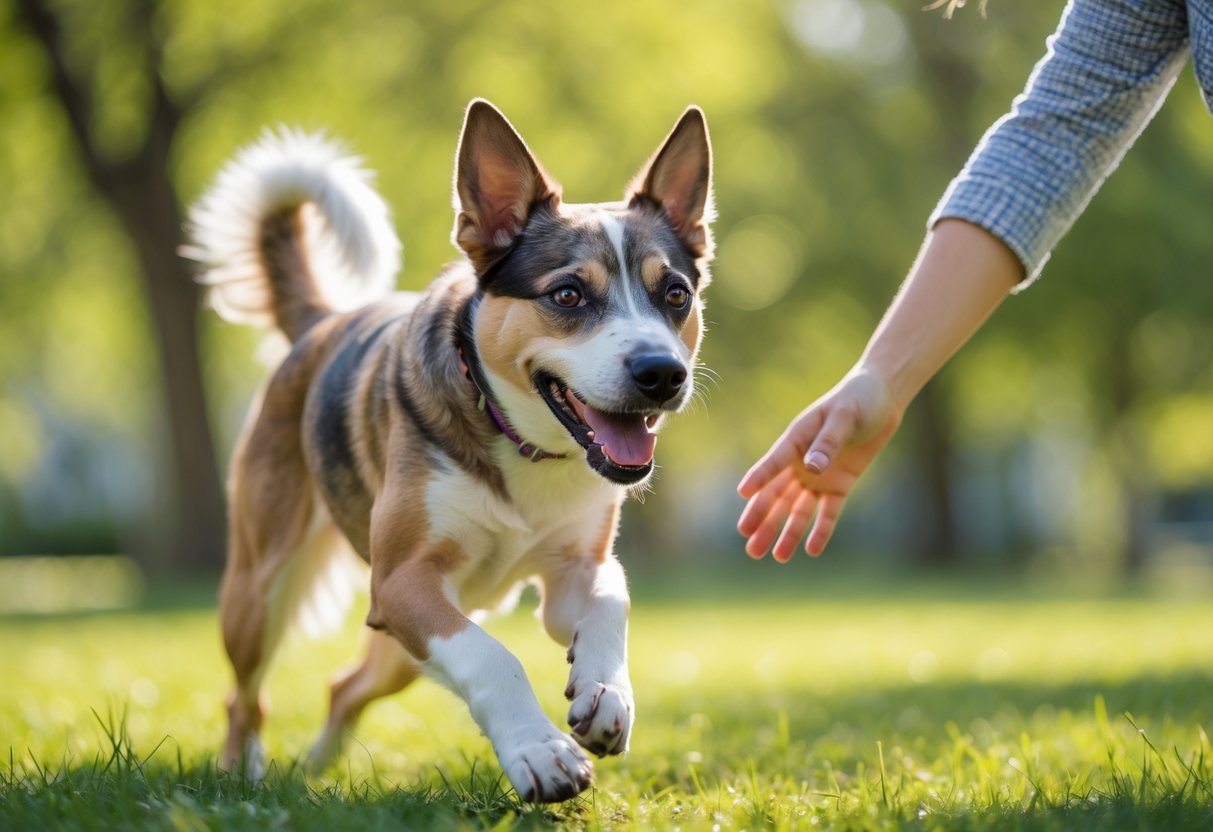
A happy dog often shows playful behavior. They may run around, fetch toys, or bow to invite play. This shows they feel safe and comfortable in their environment.
Willingness to engage with people or other dogs is another sign. A dog that wants to interact is usually content and confident. They may follow their owner or bring a toy to start a game.
If a dog avoids play or seems uninterested in attention, it might be a sign of stress or illness. Playfulness helps dogs stay active and mentally healthy. It also strengthens their bond with their family.
4) Relaxed ears, held naturally or slightly back

When a dog’s ears are relaxed and held naturally, it usually shows they feel calm and comfortable. The ears might be slightly back but not pinned tightly against the head. This is a common sign of contentment.
Sometimes the ears rest softly to the sides or just slightly behind the head. This position signals the dog is at ease with its surroundings. It often appears when the dog is resting or quietly watching.
If a dog’s ears are relaxed like this, it means they are not stressed or threatened. It is a good indicator that the dog is happy in the moment without fear or anxiety.
5) Consistent appetite and regular eating habits

A dog that eats regularly and with interest usually shows good health and a stable emotional state. When a dog has a steady appetite, it means their digestive system is working well.
Sudden changes, like refusing food or becoming picky, may indicate health or emotional issues. Keeping an eye on eating habits helps spot problems early.
Regular meals at expected times also help maintain predictable bathroom habits. Both appetite and digestion work together as signs of a dog’s overall well-being.
How Dogs Show Emotional Well-Being

Dogs display their emotional health through clear signs in their behavior and how they interact with people and other animals. These signs help owners understand if their dog feels safe, happy, and cared for.
Body Language and Communication
A dog’s body language reveals much about its feelings. A relaxed body with soft eyes and a wagging tail generally means the dog is happy and comfortable. Ears held naturally and a gentle mouth, sometimes slightly open, also show contentment.
In contrast, tense muscles or stiff posture may indicate stress or discomfort. Dogs often use facial expressions, like blinking or licking their lips, to communicate their mood. Listening to these signals helps owners respond to their dog’s needs quickly.
Dogs also use vocal sounds. Soft whines or playful barks usually mean positive emotions, while growling or excessive barking might suggest fear or frustration. Understanding these cues is key to recognizing emotional well-being.
Role of Play and Socialization
Play is a major sign of a happy dog. When dogs engage in play, they show energy, curiosity, and social connection. Activities like chasing toys, running, or gentle wrestling with other dogs help release stress and boost their mood.
Socialization affects emotional health. Dogs that spend time with humans and other pets in a friendly way tend to be more balanced. Positive interactions build trust and reduce fear or aggression.
Owners should notice if dogs seek out attention or affection, as this shows they feel safe and enjoy bonding. Playing and socializing regularly supports mental and emotional health in dogs.
Positive Lifestyle Factors for a Happy Dog
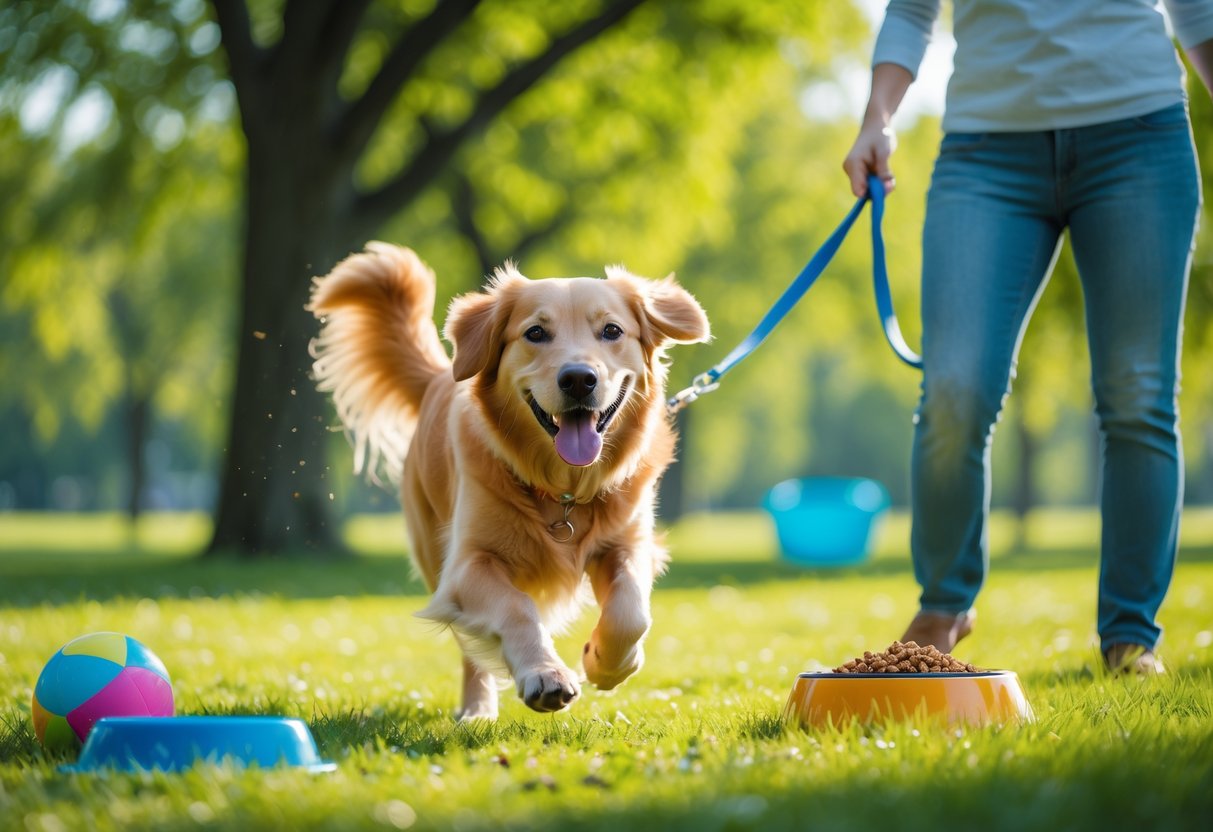
A happy dog needs more than just food and shelter. Both mental engagement and a stable environment play big roles in their well-being. Meeting these needs helps reduce stress and encourages positive behavior.
Mental Stimulation and Enrichment
Dogs require regular mental challenges to stay sharp and content. Activities like puzzle toys, training sessions, or new games keep their minds active. These exercises prevent boredom, which can cause destructive habits.
Variety is key. Changing up routines or introducing new toys helps maintain interest. Even simple tasks like hiding treats for your dog to find can provide valuable mental exercise.
Social interaction is part of enrichment too. Time spent with other dogs or people encourages positive feelings. Mental stimulation supports a dog’s confidence and reduces anxiety.
Consistent Routines and Environment
Dogs thrive on predictability. Feeding, walking, and playtimes on a set schedule help create a sense of security. When they know what to expect, dogs tend to feel calmer.
A consistent environment also matters. Familiar spaces and regular access to favorite resting spots make dogs feel safe. Sudden changes, like moving furniture or loud noises, can cause stress.
Clear rules and boundaries help dogs understand their place in the household. Consistency in rules from all family members avoids confusion and strengthens trust.
Frequently Asked Questions
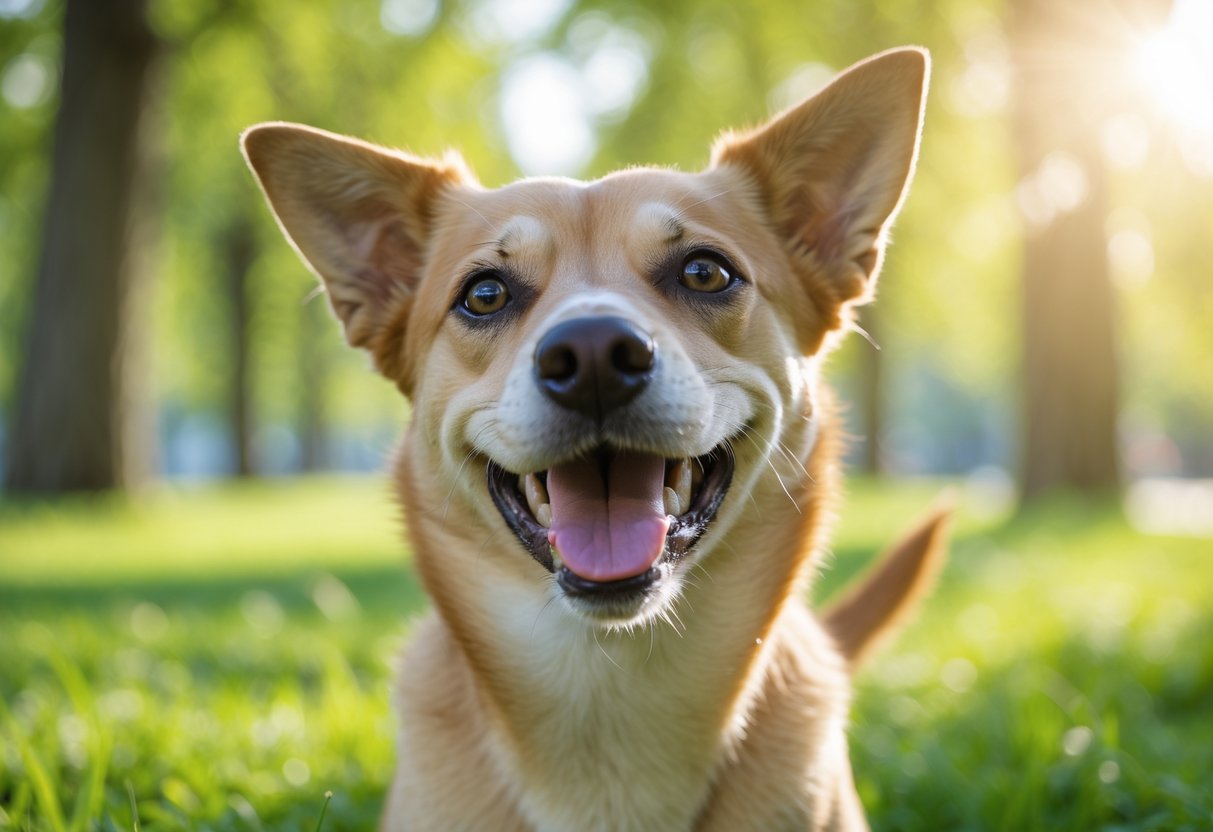
A happy dog shows clear signs through behavior, body language, and daily habits. These signs help owners understand their pet’s emotional state and well-being.
What behaviors indicate that my dog is content with their living environment?
A content dog often has a wagging tail moving loosely and relaxed. They show bright, alert eyes and a calm facial expression. Playfulness and eagerness to interact with people are also good indicators.
How can I discern if my dog is experiencing happiness or sadness?
Happy dogs exhibit relaxed ears, a soft gaze, and engage in playful behavior. If a dog shows pacing, whining, or loss of appetite, these may signal sadness or stress rather than happiness.
Which signs suggest that a dog fully trusts their owner?
A dog that trusts its owner will seek affection and often rest close by. Relaxed body posture, soft eyes, and regular playful interactions show a strong bond and trusted relationship.
What are the top indicators of a happy and healthy dog?
Key signs include a wagging tail that moves gently, a steady appetite, and relaxed ears held naturally or slightly back. Regular playfulness and alert eyes also reflect good health and happiness.
How can I identify if my puppy is adjusting well to their new home?
A well-adjusted puppy will eat regularly, explore their surroundings, and play frequently. They will show relaxed behavior and respond positively to attention from their new family members.
What actions should I look for to ensure my dog doesn’t feel neglected?
Watch for signs like eagerness to engage, looking to their owner for affection, and maintaining healthy eating habits. Avoiding destructive behavior and consistent sleep patterns suggest the dog feels cared for.
